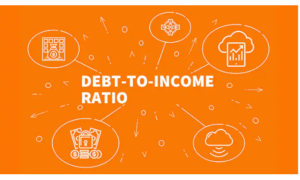Finding a stock’s intrinsic value using the P/E ratio
Among the various valuation methods, the Price-to-Earnings (P/E) ratio stands out as a popular and effective metric, offering insights into a company’s valuation in relation to its earnings. P/E can be used to value most stocks, however it’s mostly useful for established companies with a history of positive earnings, or companies whose future earnings can be estimated with fair accuracy.
What is intrinsic value?
Before going into the technicalities of the P/E ratio, it is crucial to understand the concept of intrinsic value. Intrinsic value represents the genuine worth of a stock, considering fundamental aspects such as earnings, growth prospects, and risk factors. As value-oriented investors, our objective is to pay less for a stock than its actual worth, thereby maximizing profit potential.
How can the P/E ratio help?
The P/E ratio serves as a pivotal indicator, reflecting the market’s expectations for a company’s future. It represents the price investors are willing to pay for a company’s earnings. In simple terms, if a company is anticipated to earn $1 in earnings per share (EPS) and its stock price is $20, the P/E ratio would be $20 / $1 = 20.
Investors often accept paying a premium, reflected in a higher P/E ratio, for companies displaying characteristics like high growth prospects, strong returns on capital, wide economic moats, or robust balance sheets. By incorporating these factors into the stock valuation process, investors align their decisions with a clear understanding of what justifies a higher P/E ratio, enabling them to make informed choices that resonate with their goals.
Using a tool such as pevaluator, that can accurately model the market based on each individual investor’s preferences, is immensely helpful and saves a lot of time in both finding the right investments and reaching a fair price.
Is the P/E ratio enough?
No single financial metric is enough to take a decision. All models have their drawbacks, as well as their advantages. What’s important is knowing when and how to use them. P/E should be used as a guide to help you find possibly undervalued stocks, but doing research and validating your thesis is equally important. So is comparing metrics and stats between companies in the same sector. A high P/E might mean overvaluation, or it might mean market hype. A low P/E can mean that a stock is on sale, but it can also mean the company is a risky bet.
Informed decisions help riding out market volatility.
When dealing with market volatility, the ability to make informed investment decisions becomes even more crucial. Investors well-versed in the intricacies of the P/E ratio can navigate fluctuations with confidence. Amid market sentiment fluctuations, investors armed with knowledge about intrinsic value and fair stock valuation can distinguish between market noise and underlying fundamentals.
Informed decisions act as a shield against emotional reactions to market volatility. While turbulent times may naturally induce uneasiness, relying on a reliable valuation method helps investors stay grounded. It promotes a disciplined assessment of stocks based on their true worth, allowing investors to seize opportunities arising from market fluctuations rather than succumbing to panic.
In conclusion, mastering the skill of valuing stocks is indispensable for any investor. By focusing on intrinsic value and fair stock valuation, investors can make decisions aligned with their financial goals. Understanding the factors that drive a higher P/E ratio positions investors to navigate the evolving market landscape successfully.



































